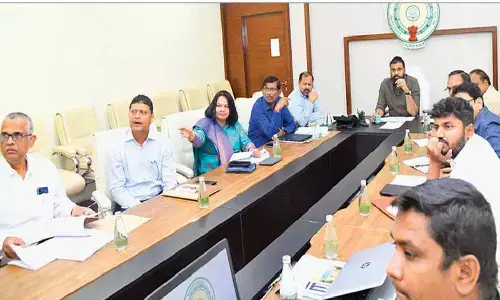Innovation key for success in retail realty

A look at the numbers from the top two web retailers, Flipkart and Amazon, in India from last year's 15-day festival period in October shows an average order value in the range of Rs 1,400 to Rs 2,000. While the rise of e-commerce is not in question, the price point when combined with the growth in discretionary income in India indicates the need for omnichannel strategies as far as brands are concerned. More importantly, investors and operators in the physical retail space must realise that an opportunity for those who can create relevant physical retail infrastructure exists in the face of the broader trends of rising incomes that are forecasted and, more importantly, higher price points.
Let us underscore that online e-commerce too will see the average price points rise with rising incomes in India. Even today, mobile phones and other electronic goods have significant sales online. The key for investors and operators targeting physical retail, whether through malls or standalone stores, is to identify brands and products that would be in the bridge-to-luxury space and therefore priced slightly higher than the average online price range.
Fundamentally, for brands and companies in the price point above Rs 5,000, the importance of access to distribution points will be a crucial driver of growth. The opportunity for operators and investors is in creating physical retail assets that can benefit from the need for newer brands to distribute and the increased consumption through larger wallets. The physical retail infrastructure must focus on a hands-on approach where brands can partner with mall and store operators to create scale and deep distribution networks. Primarily, the owners of the malls and stores will have to have a much better understanding of the needs of the brands that will utilise the asset to generate returns eventually.
To emphasise further on the hands-on and collaborative approach between brands and physical retail owners that will be needed, one needs to glance at the recent news of the distressed retail brand Forever 21 being sold to a group comprising of Authentic Brands Group, Simon Property Group and Brookfield Partners. Both Simon Property Group and Brookfield Partners were landlords of Forever 21. While the merits of the deal can be debated upon, what needs emphasis is the greater involvement of businesses that run brands and those that are landlords. Essentially, going forward, a lot of new-age brands in India that will price above a mass focussed price range will need to have the capacity to develop, operate and finance physical retail real estate to gain critical scale eventually.
Alternatively, businesses that have the capacity and know-how of managing retail real estate assets will do well to start creating business structures that allow them to add additional skills in scaling and building smaller but established brands. Primarily, the capacity for businesses to combine two distinct skills of being effective landlords and running consumer-focused companies well will be the fulcrum of success.
The strategy of combining ownership and operation of physical retail along with the consumer-focused business isn't necessarily new, but in the years to come, the capacity to combine the best practices from both the businesses to create the next big consumer-focused brands in the country will be critical. The ability to source low-cost capital, build attractive real estate assets, choose the right locations will be vital for the developers and asset operators. For the brands that are looking to scale, the capacity to create brand value and yet partner or operate as a retail real estate player will be vital.
As stated above, the role of e-commerce is not in dispute, but physical retail real estate will also have a significant role to play in the retail distribution space, especially with an eye on discretionary spending. The applicability of physical retail real estate will be even more pronounced as we go above the average price point that online transactions entail especially in products with a high number of SKUs.
The future of retail real estate will require the capacity to combine financial innovation, brand building and real estate operations. Financial vehicles that allow for the aggregation of real estate assets will also be a building block in creating businesses that can help brands succeed and real estate businesses deliver significant returns in the years to come in India.

















